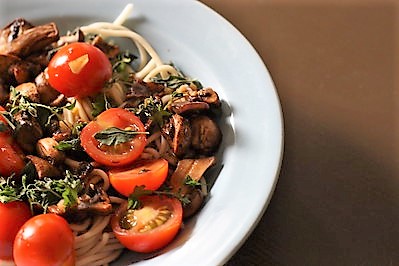
When you hear “MSG,” you might think of the seasoning added to boost umami flavor in certain dishes. But did you know that many foods naturally contain MSG? More accurately, they contain glutamate, which is the amino acid that gives umami flavor.
What Is Glutamate?
Glutamate is an amino acid found in most foods. It is a building block of protein, so it’s abundant in foods like meat, cheese, and eggs. It is also present in smaller amounts in foods like vegetables, fruits, and nuts. Glutamate is what gives foods a savory or umami flavor.
Glutamate exists in two forms in food. Bound glutamate is linked to other amino acids to form a protein. Free glutamate floats freely and is more readily received by taste receptors on the tongue.
Only free glutamate contributes to umami flavor. The more free glutamate a food has, the more savory it will be.
What Increases Free Glutamate?
Several factors impact how much free glutamate a food contains:
 Ripeness: As fruits and vegetables ripen, proteins begin to break down, releasing more free glutamate. That’s why a red ripe tomato tastes more savory and flavorful than a pale, underripe one.
Ripeness: As fruits and vegetables ripen, proteins begin to break down, releasing more free glutamate. That’s why a red ripe tomato tastes more savory and flavorful than a pale, underripe one.
Drying: Removing the moisture concentrates the glutamate and ups the umami. Ripe tomatoes have more umami than green ones, but sun-dried tomatoes will have even more.
Aging: Aging allows proteins to break down over time, releasing free glutamate. For example, fresh pork contains about 10 mg of free glutamate per 100g, while cured ham contains about 337 mg.
Fermentation: Fermentation also allows proteins to break down and release glutamate. Foods like soy sauce, miso, and kimchi owe their umami to fermentation.
Seasoning: MSG is only free glutamate, allowing you to add free glutamate directly to your food.
Foods Naturally High in Free Glutamate
Here’s a quick, non-comprehensive list of foods naturally rich in free glutamate:
Food – Free Glutamate (mg per 100 g)
Parmesan cheese – 1680
Roquefort cheese – 1280
Soy sauce – 1264
Walnuts – 658
Tomatoes (ripe) – 246
Cheddar cheese – 182
Green peas – 106
Corn – 106
Chicken – 22
MSG is a seasoning composed of the same thing that is already in many of the foods we love. From ripe tomatoes to aged cheese, free glutamate plays a crucial role in determining the deliciousness of our food. For more information on the glutamate content of food, check out https://msgfacts.com/glutamate-in-food.
Related Reading:

